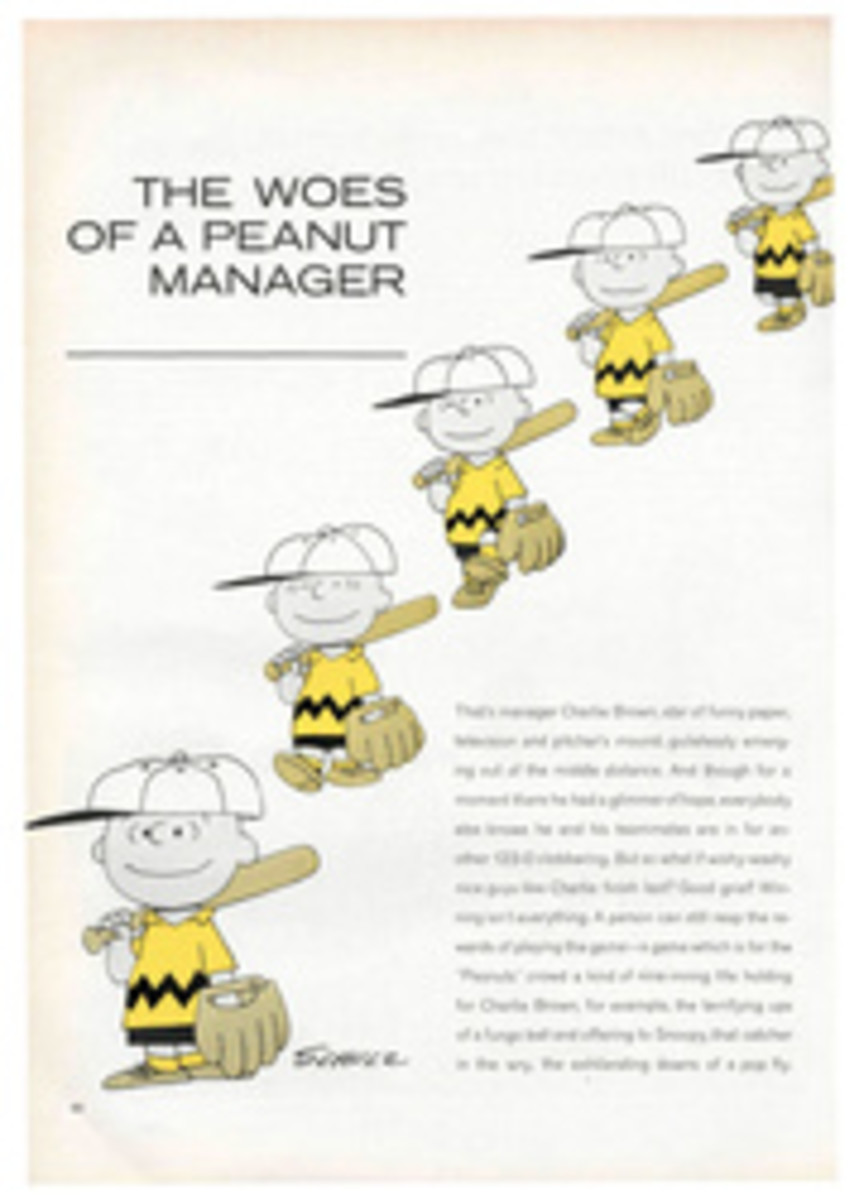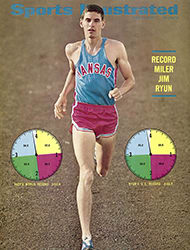
A man to lead the pros out of the darkness
At 9:05 last Wednesday night at Forest Hills all the lights blew out, and there was pro tennis—at the very start of its 1966 tour—lost in the dark. A cruel voice cried out of the wilderness: "Forget it, you gypsies." But tennis pros are hardy folk, long used to adversity, anonymity and apathy, and so at 9:17, when the lights were repaired—half of them, anyway—the players went gamely back into action, staggering about in the semigloom. Two nights later a cloudburst postponed play.
It was an inauspicious start to what promises to be the best year pro tennis has ever known. Indeed, the pros finally are organized, ready to rake in the big money the way golf has. Ed Carter, the former Professional Golfers' Association tour director, did not put up (and lose most of) $95,000 to run the Forest Hills tournament out of benevolent amiability. He was looking ahead. The matches were played under the Van Alen Simplified Scoring System (VASSS), because it is more accommodating to television. Carter has a pilot film shot of the finals—won, as usual, by one Australian, Rod Laver, over another Australian, Ken Rosewall—and tennis, in living bridal white, should soon be headed for sponsors and a 13-week series. Check your program listings.
The pros are selling themselves live, too. They have their longest U.S. schedule in history with eight cross-country stops. Four of the tournaments will be VASSS round robins. Prize money will top $150,000. Forest Hills offered $30,500, a record for one tournament, but Carter already has an option on a $40,000 indoor show next winter.
Much of the credit for the burgeoning schedule belongs to Wally Dill, a 34-year-old blond-haired, earnest type who was hired by the pros to be, essentially, their commissioner. You've got to have a commissioner nowadays. It is Dill's job to convince promoters like Carter, or industry or chambers of commerce that a pro tennis tournament is a good investment.
"Pro tennis is at the same stage golf was at a decade ago," Dill says. (As a matter of fact, just about everybody in pro tennis says this.) On his own, he adds: "The first time I met with all the players I told them I didn't see why we couldn't be making half a million in purses in a few years. They all just laughed and giggled—like, 'Buddy, you sure don't know pro tennis.' But the money's there, all right. It was just that no one had ever gone after it before. You know how organized these guys were? It was as if you and I got together with a couple other fellows and went up to the YMCA to play skins-and-shirts basketball, and we called ourselves an organization. Good Lord, they didn't even have liability insurance."
Dill is holding on to one of his two insurance agencies (presumably the one that handles liability), and he is keeping the golfers he promotes (Dave Marr, Billy Casper, Gene Littler), but he has a long, eight-year contract with the tennis pros, so he is obviously digging in for the duration. It must have encouraged Dill and made Ed Carter smile proudly to know that a week before the greatest tennis players in the world competed for $30,500, Bert Yancey won $20,000 all by himself. And who, pray, is Bert Yancey? No, not the old gun-slinger. No, Percy Kilbride played Pa Kettle. Bert Yancey is a golf pro. During Carter's 1956-61 PGA reign, purses more than doubled, and he cut out appearance money for the select few big names. "No star can be bigger than the game," Carter says. "When the game is bigger than the names in it, you'll attract more players, more stars." Thither, the Bert Yanceys.
To attract its stars, pro tennis must gain the glamour, exposure and money that other sports have. It also must convince the amateurs that they're better off getting money over the table. That is not so easy. The pros were able to pick up a middling French amateur, Pierre Barthes, for a $60,000 three-year guarantee, but what the pros really need are American players. It appears that Dennis Ralston may throw in with them next month after Wimbledon. A bigger and better influx may come in about three years when Charley Pasarell, Cliff Richey and Arthur Ashe—particularly Arthur Ashe—presumably will have won enough titles and Davis Cups to be top pro attractions. As it is now, Pancho Gonzalez is the only U.S. star, and he is 38 and making retirement announcements with increasing regularity.
At Forest Hills, Gonzalez, the ghost of tennis past, railed at the lights, VASSS, the more distant (by three feet) service line, Wally Dill and all other attempts at improvement. He also suffered the indignity of losing to little Luis Ayala the day after telling Ayala: "Luis, I could beat you even if I had to play behind the fence." However, even with a 3-2 record, Gonzalez survived to the final four, along with the ranking Aussies and Spaniard Andres Gimeno. The old campaigner struggled courageously in this finalist round robin, but he is too old to sustain top play.
Dill does not count on Gonzalez to play anymore this year, so the tour will have to make it on its own—with more foreign performers than any enterprise since the Lipizzan horses crossed the sea. Gonzalez himself cannot understand why tennis—even though it has stagnated for years while other sports have blossomed—is desecrating itself with such gadgetry as VASSS, three-foot service lines and night play. (Some other players and a good many fans evidently agree. Crowds throughout the Forest Hills tournament were sparse, totaling only 21,000 by charitable count, compared with the 36,000 who in March paid to see the same group play downtown at Madison Square Garden, where the lights are guaranteed and no rain falls.)
On the way to Forest Hills one day, Ed Carter pointed out a newspaper article about Gonzalez' views. Gonzalez' closing quote read: "Just once I'd like to see a tournament run like the ones we had during the 20 years I was learning this game. Day matches, grass courts, regular rules." Carter smiled, like a man satisfied that he was spending $95,000 on a good thing, someday. "If I were editing that, I'd add just three words of comment," Ed Carter said. " 'And no fans.' "
PHOTO
AT FOREST HILLS, WALLY DILL (RIGHT) TALKS TO AN IMPORTANT ASSET, ROD LAVER

